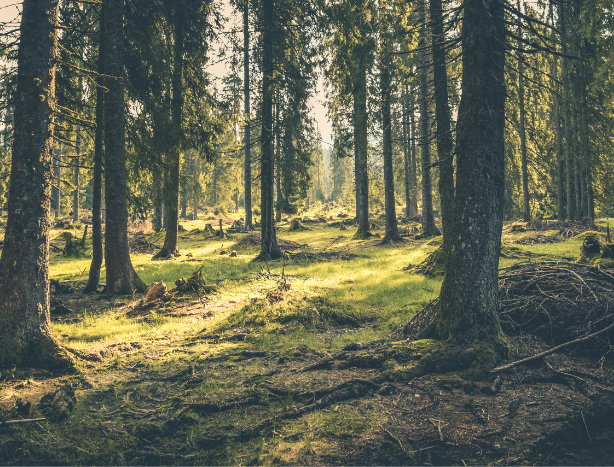COP15 Biodiversity conference and COP27 Climate change conference – the what and the why?

In this article, we review what the COP15 and COP27 conferences are all about and why they are important. Furthermore, we reveal how we at Istutapuita.fi are involved in preventing nature loss and global warming.
The COP15 Biodiversity conference was held in Montreal, Canada last December. The world’s decision-makers gathered in Sharm el-Sheikh, Egypt for the COP27 Climate change conference a month earlier. In both conferences the discussions revolved around the common goals to prevent the loss of nature and global warming together and the measures to achieve those goals.
COP15 Biodiversity conference
One of the key actions of the COP15 Biodiversity conference was to implement the UN Biodiversity Convention, which had already been ratified in 1993. Sadly, the world’s biodiversity has declined, despite the convention. Four long-term goals for the year 2050 were being worked on at the conference. Those goals are:
- Ensuring that terrestrial, inland water and coastal and marine ecosystems are under effective restoration, in order to enhance biodiversity.
- Promoting the conservation and sustainable use of biodiversity.
- Sharing the benefits from the utilization of genetic resources fairly and equitably.
- Financing, reinforcing the implementation, and mainstreaming, i.e. ensuring that biodiversity is included in all areas of politics and society.
In order to achieve these four goals, the meeting discussed 22 targets. For example, an agreement was reached on expanding the protectorates to 30 per cent of the Earth’s surface area. The deadline for these targets is 2030, the year when the world should be nature-positive. That means that biodiversity will no longer decrease and the state of nature will improve.


COP27 Climate change conference
The COP27 Climate change conference focused around making the 2015 Paris climate agreement more tangible. According to this agreement, the increase in the average global temperature must stay under 2 degrees – preferably within safety limits of less than 1.5 degrees.
The goals of the climate change conference were:
- Containment: Commitment to limit global temperature rise to 1.5 degrees Celsius above pre-industrial levels
- Adaptation: Reinforce the global action plan for adapting to climate change.
- Funding: Review progress in mobilizing US$100 billion annually by 2025 to help developing countries address the negative impacts of climate change.
- Cooperation: Ensure appropriate COP27 representation of all relevant stakeholders, especially vulnerable communities.
Unfortunately, an agreement on all goals was not reached in Egypt, and the time to limit global warming to 1.5 degrees is running out. According to the carbon calculator by Helsingin Sanomat, with current emissions, it will only take about seven years to get to that 1.5 degrees.
What are we doing to prevent global warming and nature loss?
The latest emission inventory of Tilastokeskus or Statistics Finland revealed that the Finnish land use has shifted from a carbon sink to an emission source. This startling result can be explained by abundant felling and poor tree growth, which is partly due to the old age of our forests. Our forests are on average 60 years old, having already passed the best years of growth. Therefore it is extremely important to plant new forests as carbon sinks. In approximately 20 years those forests will reach the rapid growth stage and bring about a fair position regarding carbon sinks. Carbon sinks are the reason Finland has been able to set ambitious climate goals in an international comparison, but without carbon sink forests, the goal to achieve carbon neutrality by 2035 will become unreachable.
Our primary operative goal is to create carbon sinks. We do it by planting trees on old peatlands that were previously used for energy production. Due to the lack of mineral nutrients in the soil, trees would otherwise not properly grow in these areas. On peatlands, the trees absorb the carbon dioxide released from peat. One tree we plant absorbs about 600 kilograms of carbon dioxide over a hundred years. The counter on our homepage shows you the number of trees we have planted and the amount of carbon dioxide they absorb in total during their life cycle. We are working relentlessly to ensure that the Finnish lands would be a significant carbon sink rather than an emission source.
At the same time, we also promote biodiversity. Some parts of our planting sites are relatively moist by nature and are therefore better suited for paludiculture (= wet agriculture and forestry on peatlands) rather than planting forests. We are currently working together with the Natural Resources Institute Finland (LUKE) on how we could harness these areas for paludiculture in the best way for nature.
Paludiculture is an excellent alternative in many ways: It can help create carbon sinks that are even more efficient than forest areas. It also offers a habitat for waterfowl that thrive in wetlands. About 50% of those species are endangered. Numerous endangered types of plants and insects also live in the wetlands. To preserve those species we need more wetland areas.
– I am personally really enthusiastic about paludiculture! It enables a wide range of research, innovation and collaboration, that all help in developing sustainable export products for Finland. For example, biogas can be produced from cattail, and pillow stuffing made out of down or oil-based artificial fibres can be replaced with a completely biodegradable, vegan, non-toxic and plastic-free alternative, says Istutapuita.fi entrepreneur Timo Tammenaho.
Contact Us!
Do you want to find out how your company can offset its carbon dioxide emissions and participate in our carbon sink project? Send us a message and we'll get back to you as soon as possible or call Timo on +358 40 485 6607.
Company
Forest Gump Oy
Nousiaistentie 4 LT
00280 Helsinki
FINLAND
Invoicing
E-invoicing address: 003732031469
Operator:
Apix Messaging Oy
Operator ID: 003723327487
Terms and Conditions
Privacy Notice
